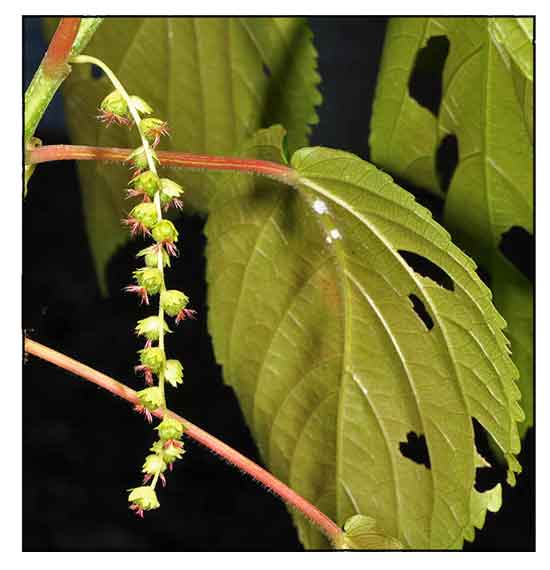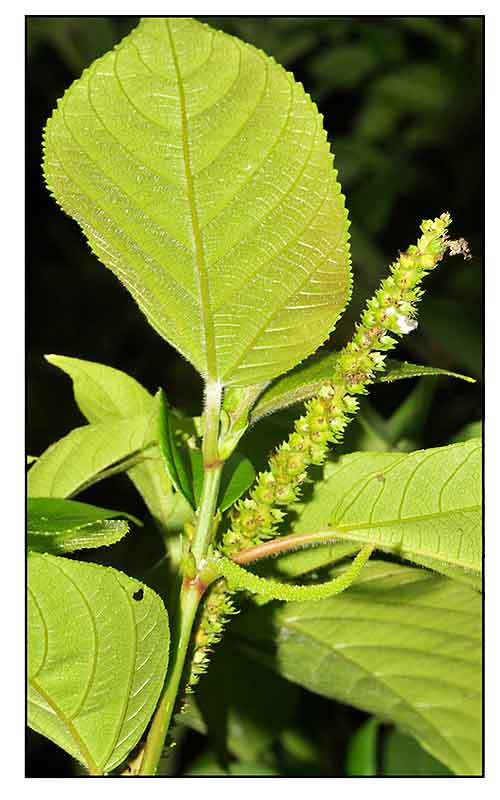
Family • Euphorbiaceae
Maslakot-ambulong
Bogus
Acalypha amentacea Roxb.
GREEN LEAF AMENTACEA
| Scientific names | Common names |
| Acalypha amentacea Roxb. | Balingud (Palawan) |
| Accepted Infraspecifics (3) | Bogus (Tagalog) |
| Acalypha amentacea var. amentacea | Maslakot-ambulong (Mindoro) |
| Achyranthes spiciflora Burm. | Pameti (Cebu) |
| Acalypha affinis Klotzsch | Toongtoong (Cebu) |
| Acalypha amboynensis Benth. | Green leaved amentacea (Engl.) |
| Acalypha centromalayca Pax & K.Hoffm. | |
| Acalypha glandulosa Blanco | |
| Acalypha grandis var. amboynensis (Benth.) Müll.Arg. | |
| Acalypha luzonica Pax & K.Hoffm. | |
| Acalypha meyeri Pax & K.Hoffm. | |
| Acalypha philippinensis Müll.Arg. | |
| Acalypha stipulacea Klotzsch | |
| Acalypha warburgii Pax & K.Hoffm. | |
| Ricinocarpus blancoanus Kuntze | |
| Ricinocarpus stipulaceus (Klotzsch) Kuntze | |
| Acalypha amentacea var. heterotricha Fosberg | |
| Acalypha amentacea var. trukensis (Pax & K.Hoffm.) Fosberg | |
| Acalypha trukensis Pax & K.Hoffm. | |
| Acalypha amentacea Roxb. is an accepted species. KEW: Plants of the World Online | |
| Other vernacular names |
| MOLUCCAS: Laransian'a. |
| PAPUA NEW GUINEA: Semur. |
October 2023
![]()
 |
| PHOTOS / ILLUSTRATIONS |
| IMAGE SOURCE: Euphorbiaceae : Acalypha amentacea var. amentacea / Inflorescence / Copyright © 2012 by P B Pelser & J F Barcelona (contact: [email protected]) [ref. DOL50309] / Non-Commercial Use / image modified / click on image or link to go to source page / Phytoimages.siu.edu |
| OTHER IMAGE SOURCE: Euphorbiaceae : Acalypha amentacea / Flowering twig / Copyright © 2011 by Leonardo L Coi [ref. DOL34543] / Non-Commercial Use / image modified / click on image or link to go to source page / Phytoimages.siu.edu |
| OTHER IMAGE SOURCE: Euphorbiaceae : Acalypha amentacea / Flowering twig / Copyright © 2011 by Leonardo L Coi [ref. DOL34662] / Non-Commercial Use / image modified / click on image or link to go to source page / Phytoimages.siu.edu |
Additional
Sources and Suggested Readings |
• |
DOI: It is not uncommon for links on studies/sources to change. Copying and pasting the information on the search window or using the DOI (if available) will often redirect to the new link page. (Citing and Using a (DOI) Digital Object Identifier) |
| List of Understudied Philippine Medicinal Plants |
| New plant names needed The compilation now numbers over 1,300 medicinal plants. While I believe there are hundreds more that can be added to the collection, they are becoming increasingly difficult to find. If you have a medicinal plant to suggest for inclusion, please email the info: local plant name (if known), any known folkloric medicinal use, scientific name (most helpful), and, if available, a photo. Suggestions are greatly appreciated. (G.Stuart) |
• |
 |
• |




